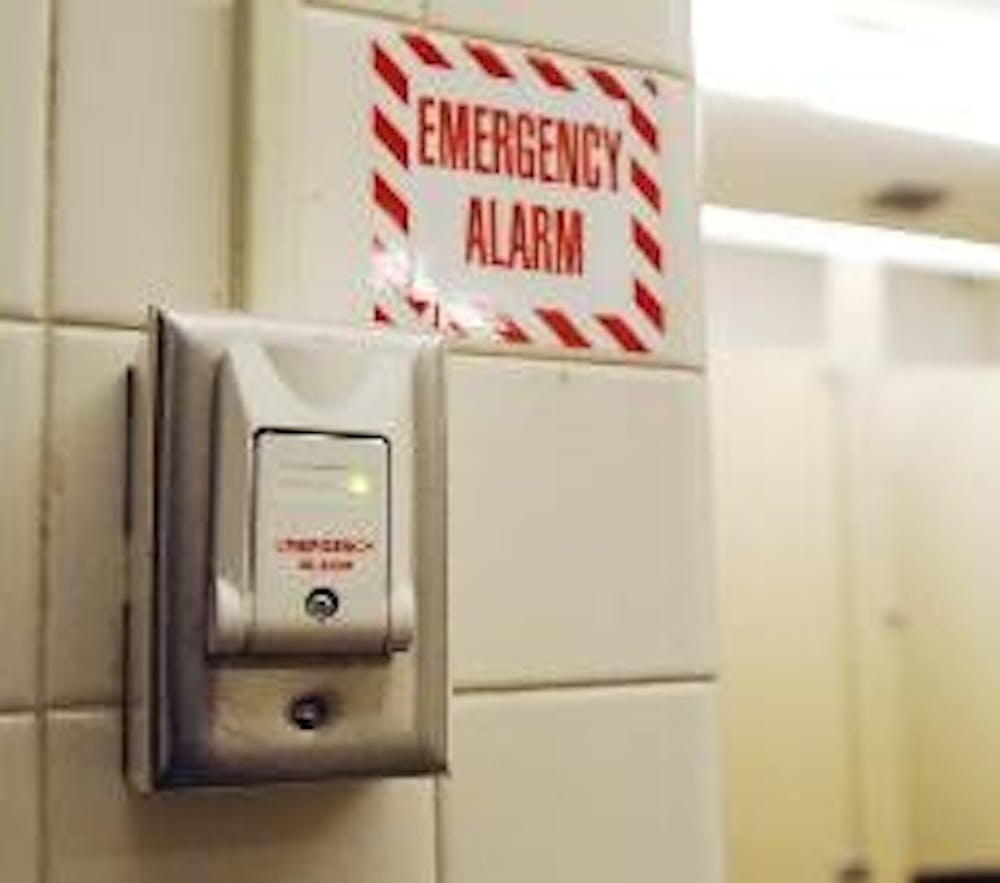
Unlike more recent campaigns to reduce crime on campus, the Nuisance Alarm Reduction Team prefers to keep a low profile.
Their goal: Stop falsely triggered alarms from disrupting the academic lives of students throughout campus.
And with the recent increase in the sophistication and number of alarm systems across campus, University officials say NART's job is more necessary now than ever.
NART - created two and a half years ago - is made up of eight to ten representatives from departments within the Penn Division of Public Safety and Facilities and Real Estate Services, according to Domenic Ceccanecchio, a founder of NART and director of security and technical services for Public Safety. It meets monthly to discuss alarm-activation trends across campus.
Bringing together representatives from different involved parties was necessary, Ceccanecchio said, so that the University could "address the issue from a holistic view."
The complaints about alarms vary by building, but Williams Hall became the scene of major problems with false alarms this semester.
Earlier this semester, students taking classes in Williams reported almost daily disruptions coming from an alarm in the bathrooms.
However, a number of these same students say the frequency of such alarms has lessened.
College freshman Chris Ward, who is in Italian classes on Tuesdays and Thursdays on the third floor of Williams from 3 to 4:30 p.m., said the last time he heard an alarm go off was in early November.
This does not mean, however, that the Williams situation has been completely solved.
College sophomore Amy Murphy, who takes Italian five days a week on the third floor in Williams from 2 to 3 p.m., said she heard one go off last Monday.
While her professor did get annoyed, she said, it only lasted a few minutes.
Murphy said she has noticed that there has "not been too much disruption lately," a change from the beginning of the term.
Ceccanecchio said Williams became a problem spot just this semester and is currently under investigation by NART.
"It's kind of an anomaly," he said. The duress alarms in the bathrooms "were installed there years ago; only this semester we started to see a number of alarms coming from there."
There are three types of nuisance alarms, Public Safety spokeswoman Karima Zedan said: malfunctioning technology, design-related problems and behavior-related issues.
The third kind is the most troublesome, Zedan added, since it involves an individual, usually knowingly, activating an emergency alarm when there is no emergency.
"Nuisance alarms are, without question, an inefficient use of human and financial resources," she said.
At least two members of the Penn Police respond to every alarm that is activated, which could lead to a lack of manpower in the case of a real emergency.
Once security personnel respond, maintenance staff have to reset the alarm, which can be a lengthy process.
The Daily Pennsylvanian is an independent, student-run newspaper. Please consider making a donation to support the coverage that shapes the University. Your generosity ensures a future of strong journalism at Penn.
DonatePlease note All comments are eligible for publication in The Daily Pennsylvanian.








